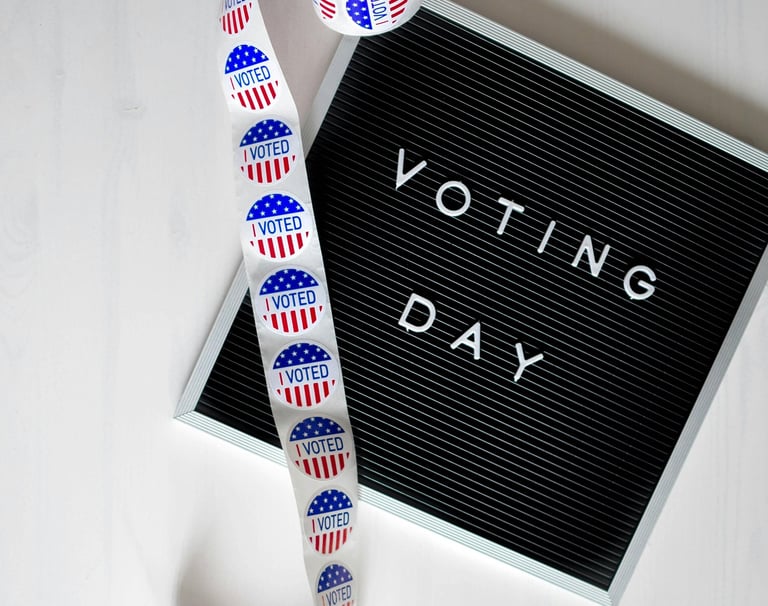The Digital Outreach Insights from the November 2025 Election: What Government Officials Can Learn
The 2025 election results marked a decisive wave of nationwide victories for Democrats, who swept major races across the country. Abigail Spanberger became Virginia's first female governor, Mikie Sherrill won the New Jersey governorship, and Zohran Mamdani made history as New York City's first Muslim mayor and youngest in a century. While pundits will debate the political implications of these victories for months to come, one factor cuts across all three campaigns: a sophisticated, audience-tailored approach to digital engagement that offers valuable lessons for government officials at every level.
11/5/20254 min read


The Unified Message, Diverse Delivery
Despite representing different wings of the Democratic Party—from Spanberger's moderate pragmatism to Mamdani's progressive vision—all three winning campaigns centered on a single, resonant theme: affordability and cost of living. But what distinguished these victories wasn't just the message itself; it was how each candidate adapted that message to their unique audience through digital platforms.
Spanberger's campaign kept its focus laser-sharp on economic issues, bobbing and weaving around more divisive topics to maintain broad appeal in purple Virginia. Her digital presence emphasized her "Affordable Virginia Plan" through straightforward, policy-focused content that reached suburban and rural voters where they were most active online.
Sherrill similarly centered her campaign on making life more affordable for New Jersey residents, using her military background and prosecutorial experience to establish credibility. Her digital strategy balanced traditional campaign communications with targeted outreach to suburban voters concerned about property taxes and energy costs.
Mamdani, meanwhile, revolutionized the political playbook entirely. His campaign transformed social media from a broadcast medium into an immersive experience. A viral January video featuring interviews with halal cart owners about rising chicken-over-rice prices garnered over 84,000 Instagram likes—not because it was slickly produced, but because it told authentic New York stories. His team moved beyond "a thousand points of broadcast TV" to create what one observer called a "lifestyle brand" built on Instagram reels, TikTok videos, and genuine street-level engagement.
Instant Engagement: Be Where the Moment Lives
What set these campaigns apart was their understanding that different platforms serve different purposes. Mamdani's team didn't just post content—they cultivated communities. They held an exclusive 40-minute briefing for more than 70 content creators from Twitch, YouTube, Instagram, TikTok, and various podcasts, reaching a combined audience of over 77 million followers. Most notably, these weren't political influencers but cultural, lifestyle, and identity creators who could reach "those who are not yet engaged, those who are disaffected, those who are too busy trying to figure out how to survive to actually engage in the politics."
This represents a fundamental shift in how political communication works. Traditional media briefings remain important, but campaigns that understand the power of authentic creators—people who've already built trust with specific audiences—gain access to communities that conventional political messaging can't reach.
Authenticity Over Polish: The Relatability Factor
Perhaps the most striking common thread across these victories was what commentators called the willingness to "sweat"—to show effort, vulnerability, and genuine concern rather than maintain a polished, distant persona. Spanberger raised nearly twice as much money as her opponent and held rallies for thousands, steadily widening her lead through relentless ground-level engagement. Sherrill maintained an exhausting pace on the campaign trail despite facing personal attacks. Mamdani appeared "on seemingly every block of the city" and spoke openly about his claustrophobia and anxiety in the campaign's final days.
This authenticity translated directly to their digital presence. Rather than perfectly curated content, these campaigns prioritized genuine moments—Mamdani walking through bodegas, confronting rent prices, having real conversations with everyday New Yorkers. The aesthetic wasn't about perfection; it was about connection. As Mamdani's strategists put it, the broader narrative was simple: "Life doesn't have to be this hard".
Key Takeaways for Government Officials
1. Consistency Matters More Than Volume
Mamdani's campaign demonstrated remarkable message discipline—his launch video, primary ads, and general election messaging stayed remarkably consistent throughout. In an era of information overload, a clear, repeated message cuts through the noise more effectively than constant pivoting.
2. Meet Your Audience Where They Are
Different constituencies consume information differently. Spanberger's approach worked for Virginia's mix of urban, suburban, and rural voters. Mamdani's social-first strategy resonated with New York City's diverse, digitally-native population. Understanding your specific audience's media habits isn't optional—it's foundational.
3. Authenticity Beats Production Value
Voters can detect manufactured authenticity immediately. The most shared, most impactful content from these campaigns wasn't the most expensive—it was the most genuine. Officials should focus on real stories, real conversations, and real responses to constituent concerns.
4. Expand Your Definition of "Media"
If you're only thinking about traditional press, you're missing a significant portion of your audience. Content creators, influencers, and community voices have built trust with specific demographics. Engaging them isn't about going viral—it's about reaching communities through trusted messengers.
5. Show, Don't Just Tell
Video content showing candidates in action—walking neighborhoods, listening to constituents, explaining policies in real-time—consistently outperformed static posts. This is something every local official can replicate without a major campaign budget.
Looking Ahead
These victories suggest that the future of political communication lies not in choosing between traditional and digital, moderate and progressive, or polished and authentic—but in understanding which tools, tones, and platforms serve your specific community best. The common denominator? A clear message about issues people care about, delivered with genuine effort through the channels where your constituents actually spend their time.
For state and local officials watching these results, the question isn't "Should I be on social media?" but rather "How can I use digital platforms to genuinely connect with and serve my constituents?" Last night's winners showed that when officials combine authentic engagement, platform-specific strategies, and unwavering focus on the issues that matter most to their communities, digital communication becomes more than a campaign tool—it becomes a governing asset
At Public Square Analytics, we help government officials understand and optimize their digital engagement strategies. Want to learn how your social media presence compares to your peers or dive deeper into what content resonates with your constituents? Contact us to learn more about our custom dashboards and research insights.
